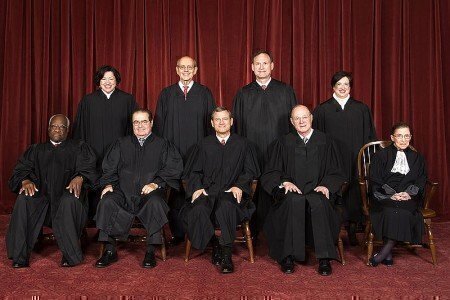On Monday, the Supreme Court justices reconvene in private to consider a huge number of new cases for its new term.
 Known as the “long conference,” the meeting is important, and not without some controversy. The nine justices will somehow evaluate about 2,000 petitions and other motions, and accept just a few for the term that starts on the first Monday in October.
Known as the “long conference,” the meeting is important, and not without some controversy. The nine justices will somehow evaluate about 2,000 petitions and other motions, and accept just a few for the term that starts on the first Monday in October.
Last September, the Justices accepted 11 cases out of about 1,800 petitions it had received over the summer. These cases included several that were the most-important considered in the Court’s 2014 term, including a decision about discrimination under the Fair Housing Act, and the use of police dogs without a warrant during prolonged traffic stops.
Back in 2013, the Court accepted an important case about union dues at the long conference called Harris v. Quinn, which could play a key part in a big case about union dues in the 2015 term called Friedrichs v. California Teachers Association.
How do the nine Justices review about 2,000 cases and make decisions on accepting them, while they are ostensibly on summer vacation?
That work is left to the clerks who work for the Justices, who for the most part team up to decide which cases to recommend to the Justices for acceptance.
Eight of the nine Justices, with the exception of Samuel Alito, agree to pool their clerks together to divide up the petitions, appeals and motions, and the clerks evaluate them all during the summer. Justice Alito had his own team of clerks evaluating the same petitions.
During the long conference, the Justices will accept more cases than usual but also reject a much-higher percentage than usual, because of the sheer bulk of the cases before them.
A recent research paper published in the Law and Society Review found that the petitions arriving over the summer had a 16 percent worse chance of being accepted by the Court. The three researchers believed the reluctance of new clerks to recommend cases was part of the reason for the lower acceptance rate.
The New York Times’ Adam Liptak wrote in August about how seasoned attorneys try to avoid having their petitions on the long-conference calendar.
Liptak spoke with Gregory Garre, a former solicitor in the George W. Bush administration, about the long conference’s reputation.
“Given the numbers, as counsel, you really have to try your best to avoid the summer list, though sometimes it is unavoidable,” Garre said. “Fortunately, as tough as the odds are, the cream can still rise to the top.”
But just because a case is on the long-conference list doesn’t mean it won’t have its day in court. Last September, the Court didn’t act on petitions before it about the legality of same-sex marriages.







